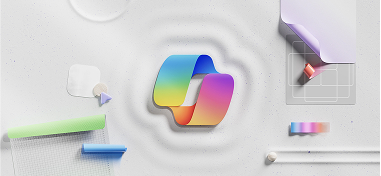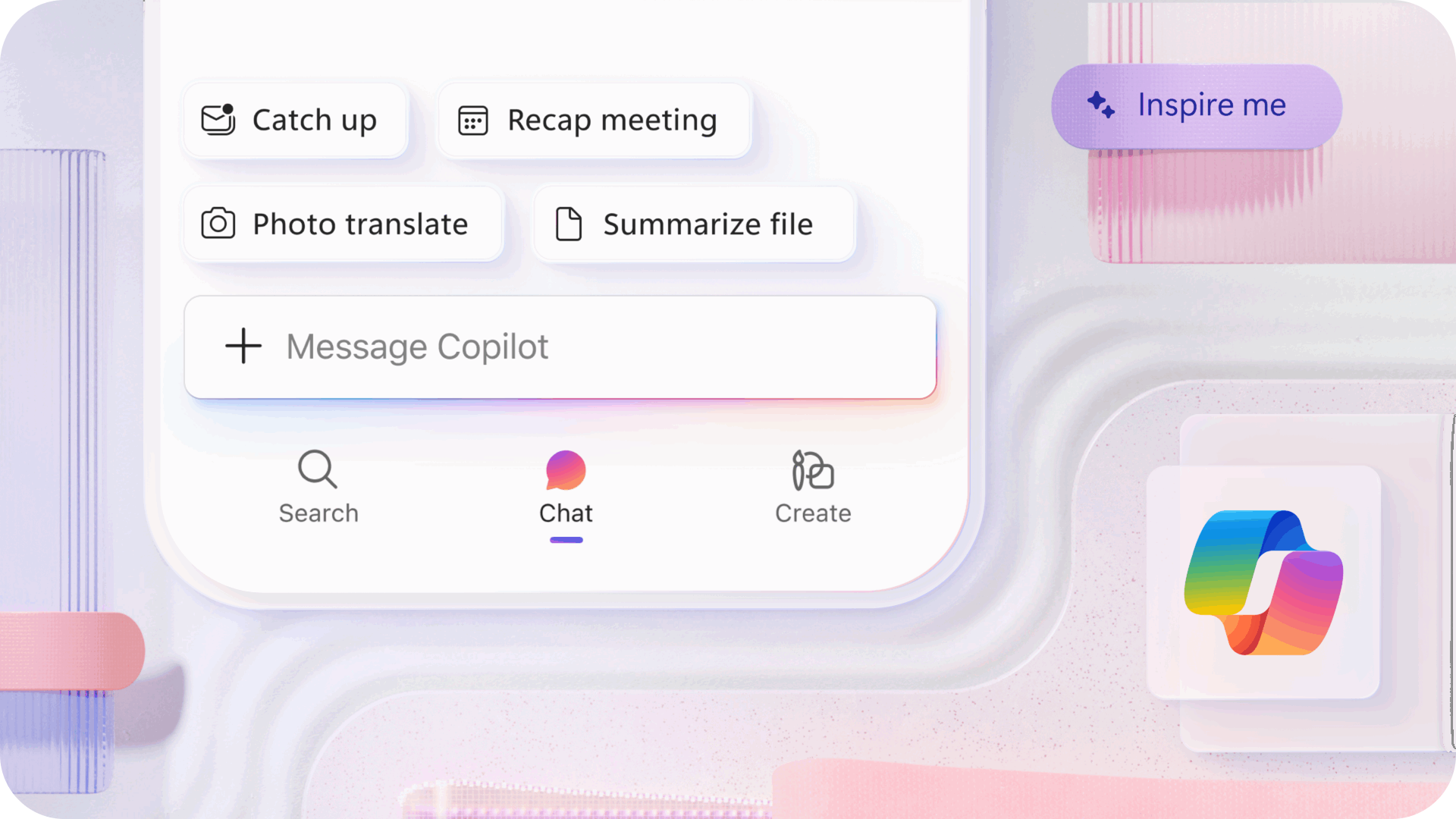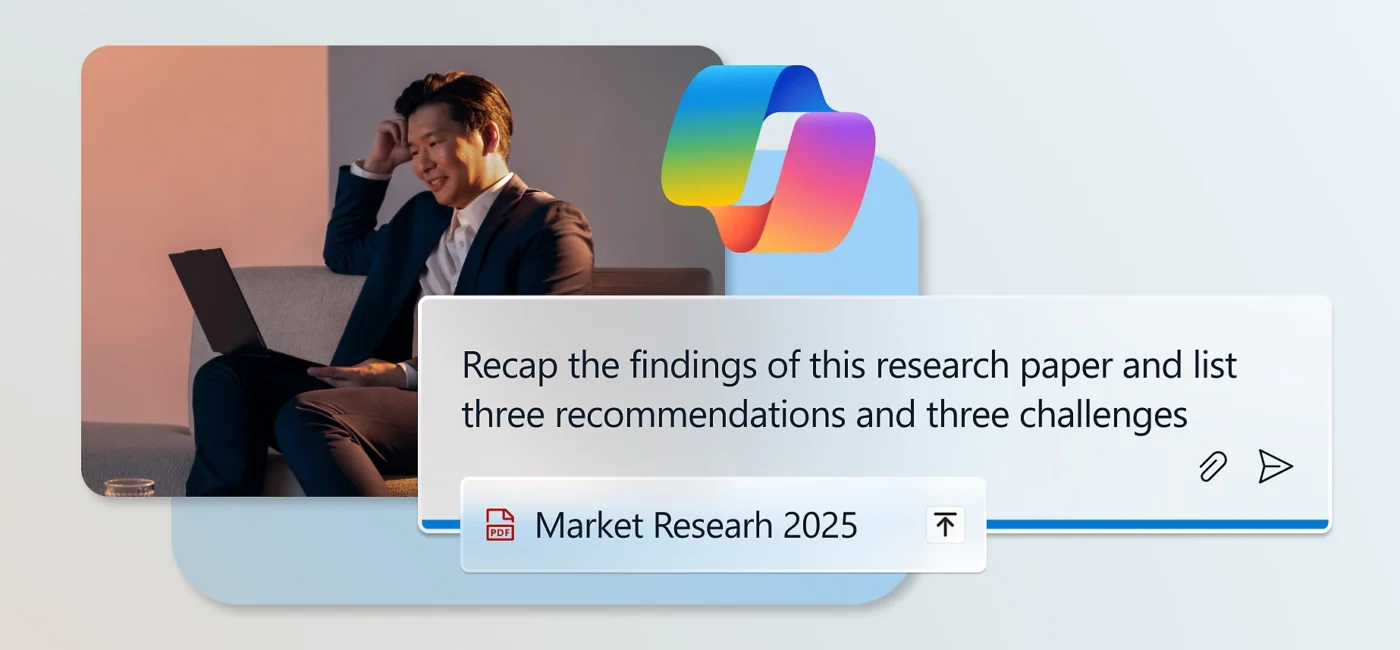

AI adoption accelerates but creates dangerous blind spots in data protection. We eliminate those gaps.
Microsoft AI interactions stay secure with Ridge Security Lab’s advanced threat protection.

Lock it down.


Netskope inspects web traffic and cloud services with deep context understanding, analyzing transactions in real-time.
Transaction event streaming and user risk scoring enables adaptive access policies based on context in use.

Frequently Asked Questions
Absolutely. If building AI solutions with Azure Foundry or other models within the Microsoft ecosystem, Purview capabilities apply across all Microsoft workloads. All classification, labeling, and data governance features available with Microsoft 365 Copilot extend to broader Azure components and custom LLM implementations that leverage Microsoft Graph. Our Microsoft security integration covers the complete AI ecosystem.
No, Copilot does not train on organizational data or leak information into the model. Each organization has their own instance of the AI and Large Language Model (LLM). Customer A's LLM is completely separate from Customer B's LLM. Copilot consists of three components: the LLM, semantic index, and Microsoft Graph, but all data stays within the organization's instance and is never used for training purposes. Our Microsoft AI security framework ensures complete data isolation.
The core problem: Microsoft Copilot honors existing SharePoint permissions while dramatically expanding data discovery through AI-powered search and correlation. Minor permission oversights become major Microsoft AI security breaches.
Rather than blocking Microsoft AI deployment, the Cloud Solution Architect recommends systematic Copilot security implementation that enables confident artificial intelligence adoption.
Engage Microsoft 365 administrators including SharePoint, Compliance, and Copilot security teams for comprehensive AI protection coverage.
Define Microsoft AI sensitivity standards by establishing clear Copilot data classification criteria that prevent artificial intelligence overexposure.
Discover Copilot data access patterns using SharePoint Data Access Governance reports to identify Microsoft AI security vulnerabilities.
Prioritize Microsoft AI data protection by securing the most sensitive Copilot-accessible information first through targeted artificial intelligence security controls.
Deploy Microsoft Purview solutions that provide ongoing Copilot security rather than one-time Microsoft AI protection fixes.
AI Agents introduce compliance complexities around data residency, audit trail requirements, and regulatory approval processes. The M365 Copilot API can create data flows that violate industry regulations if not properly configured. Healthcare, financial, and defense organizations face particular compliance challenges with agent-generated content and automated decision-making processes. We address regulatory requirements for AI implementations.
The primary data leakage risks include employees accidentally sharing sensitive information in prompts, Copilot responses containing confidential data from connected systems, and unauthorized data access through poorly configured agent permissions. Code Interpreter functions can expose proprietary algorithms, while CUA (Conversational User Authentication) bypasses may grant excessive access. We prevent data loss across all AI interactions.
The core problem: Microsoft Copilot honors existing SharePoint permissions while dramatically expanding data discovery through AI-powered search and correlation. Minor permission oversights become major Microsoft AI security breaches.
Rather than blocking Microsoft AI deployment, the Cloud Solution Architect recommends systematic Copilot security implementation that enables confident artificial intelligence adoption.
Engage Microsoft 365 administrators including SharePoint, Compliance, and Copilot security teams for comprehensive AI protection coverage.
Define Microsoft AI sensitivity standards by establishing clear Copilot data classification criteria that prevent artificial intelligence overexposure.
Discover Copilot data access patterns using SharePoint Data Access Governance reports to identify Microsoft AI security vulnerabilities.
Prioritize Microsoft AI data protection by securing the most sensitive Copilot-accessible information first through targeted artificial intelligence security controls.
Deploy Microsoft Purview solutions that provide ongoing Copilot security rather than one-time Microsoft AI protection fixes.
Microsoft 365 Copilot and AI Agents create new security risks. The attack vectors include data leakage through prompt injection, oversharing of sensitive information in AI responses, and unauthorized access to organizational data through compromised AI interactions. The Researcher and Analyst agents can inadvertently expose confidential business intelligence if not properly secured. We secure Copilot and identify these vulnerabilities before they become breaches.
https://www.youtube.com/watch?v=rAg64tgoW6UThe core problem: Microsoft Copilot honors existing SharePoint permissions while dramatically expanding data discovery through AI-powered search and correlation. Minor permission oversights become major Microsoft AI security breaches.
Rather than blocking Microsoft AI deployment, the Cloud Solution Architect recommends systematic Copilot security implementation that enables confident artificial intelligence adoption.
Engage Microsoft 365 administrators including SharePoint, Compliance, and Copilot security teams for comprehensive AI protection coverage.
Define Microsoft AI sensitivity standards by establishing clear Copilot data classification criteria that prevent artificial intelligence overexposure.
Discover Copilot data access patterns using SharePoint Data Access Governance reports to identify Microsoft AI security vulnerabilities.
Prioritize Microsoft AI data protection by securing the most sensitive Copilot-accessible information first through targeted artificial intelligence security controls.
Deploy Microsoft Purview solutions that provide ongoing Copilot security rather than one-time Microsoft AI protection fixes.
As AI-powered attacks evolve, you need to ensure your cybersecurity vendors are prepared.
Ask them:
Our Zero Trust Architecture, with AI threat detection, protects even the most complex environments against emerging AI-powered threats.
With a 245% surge in LinkedIn-based attacks, organizations need dedicated protection strategies. Start by creating clear policies for external communication, implement security awareness training focusing on social media threats, deploy solutions that can monitor message patterns across platforms, and implement browser-level protection that analyzes code execution when pages load. Teams implementing our managed security infrastructure have reported significantly improved detection rates for LinkedIn-based attacks through our multi-channel threat monitoring capabilities.
AI-generated voice technology has reached concerning levels of realism. Modern voice synthesis can create natural-sounding speech that mimics human conversation patterns, complete with natural pauses, filler words, and authentic intonation. These voices are increasingly capable of deceiving people on phone calls, particularly in high-pressure scenarios when combined with other social engineering tactics. Our clients implementing military-grade security services have found that cross-channel behavior analysis significantly improves their ability to identify these sophisticated voice-based social engineering attempts.
Traditional security tools focus on specific channels rather than analyzing the complete attack chain across multiple platforms. When attackers start with email but shift to Teams, SMS, or phone calls, your siloed security solutions miss the complete picture. Additionally, most tools don't analyze code execution when web pages load, leaving your browser—essentially an operating system—vulnerable to sophisticated JavaScript attacks. Organizations deploying The ONE Platform have consistently reported improved detection rates for these multi-channel attacks, as it provides integrated protection that follows attackers across their entire kill chain.
Attackers have developed sophisticated techniques to evade standard email security, including shifting between communication channels (email to SMS to phone), hiding malicious content in legitimate cloud apps like DocuSign, using multiple redirectors to shake off security tools, implementing "Am I Human" verification pages that block security scanners, and embedding text inside images to bypass text analysis. Our clients have found that implementing Zero Trust Architecture principles significantly improves their ability to detect these cross-channel attacks by verifying every access request regardless of which communication platform it originates from.
Black Basta has developed a sophisticated attack method using AI to sign victims up for hundreds of legitimate newsletter subscriptions, overwhelming their inbox for 30-90 minutes. This creates confusion and frustration, after which attackers contact targets through Teams messages or spoofed phone calls, impersonating IT support and offering to "fix" the email problem. Once victims download the supposed fix, their systems become compromised with ransomware. Organizations that trust us as their MSSP benefit from advanced frequency pattern analysis that detects and blocks these psychological smokescreens before they can establish a foothold in your environment.
Unlike large language models that require massive infrastructure, attackers are shifting to Small Learning Models (SLMs) that can run on a single gaming PC. This means they don't need data centers—they can operate completely anonymously using just a computer with a high-end graphics card like an NVIDIA 4080. These specialized AI models can be trained for specific attack tasks, chain together for complex operations, and operate with minimal footprint. Many of our clients have found that The ONE Platform's distributed AI detection capabilities provide the visibility they need across their entire messaging landscape to identify these emerging threats.
Inc. Magazine's fastest growing leader in Managed Cybersecurity—3 years in a row.
Rapid response times, with around the clock IT support, from Inc. Magazine’s #1 MSSP.
Rapid response times, with around the clock IT support, from Inc. Magazine’s #1 MSSP.